Oliver and I have been making good progress at the Charlottetown Farmers’ Market reducing our weekly waste footprint.
Today we got things down to two pieces of paper towel (compostable) and the water needed to wash out Oliver’s glass and my mug.
We realized that we don’t need straws to drink smoothie and iced tea, so we’ve dispensed with them.
We carry a cloth shopping bag, but still end up with a few plastic bags for carrying things like lettuce; we’ll work on that.
Market Manager Bernie reports that the waste sorting changes continue to work well, to the point where the waste is now going into three streams at Island Waste Management—recycling, compost and waste—whereas before it was all going into waste. The key is to keep the sort rate in the better-than-90% range.
The next step for the market is to get vendors together to bulk-purchase compostable plates, cups and utensils.
The Air Canada departure lounge at Boston’s Logan Airport Terminal B is an unfortunate closet far too stuffed with people. It harkens back to a more angsty, uncomfortable age of travel.
Today I discovered that if you get off the car rental shuttle at Terminal A, one stop early, you can grab a not-completely-unpleasant sandwich, and then walk upstairs to a sunny new pedway to Terminal B that affords a stunning view of downtown Boston as well as comfortable rocking chairs.
It’s a pleasant place to decompress before entering the security line and the stuffed closet that lies beyond it.
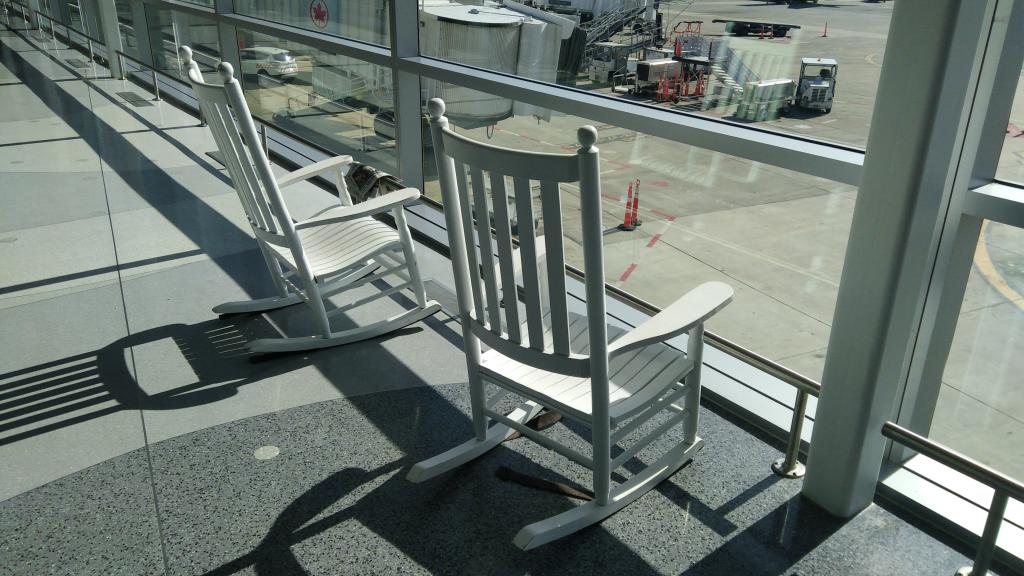 ,
, 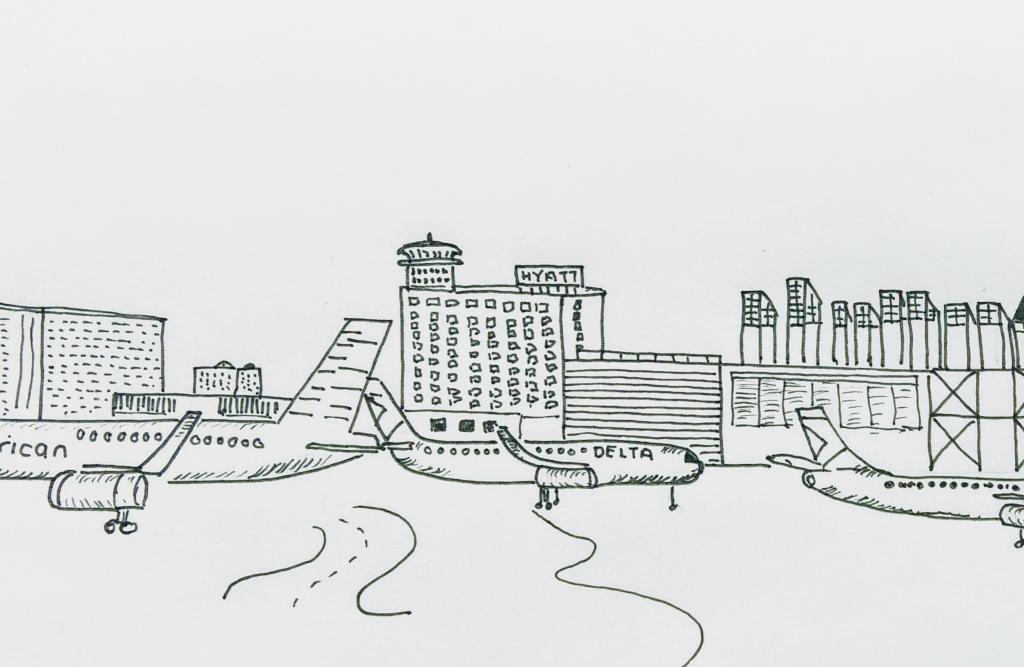
I made my regular pilgrimage to the great Toadstool Books and came away with these four. Between them they include most of what I’m interested in these days.
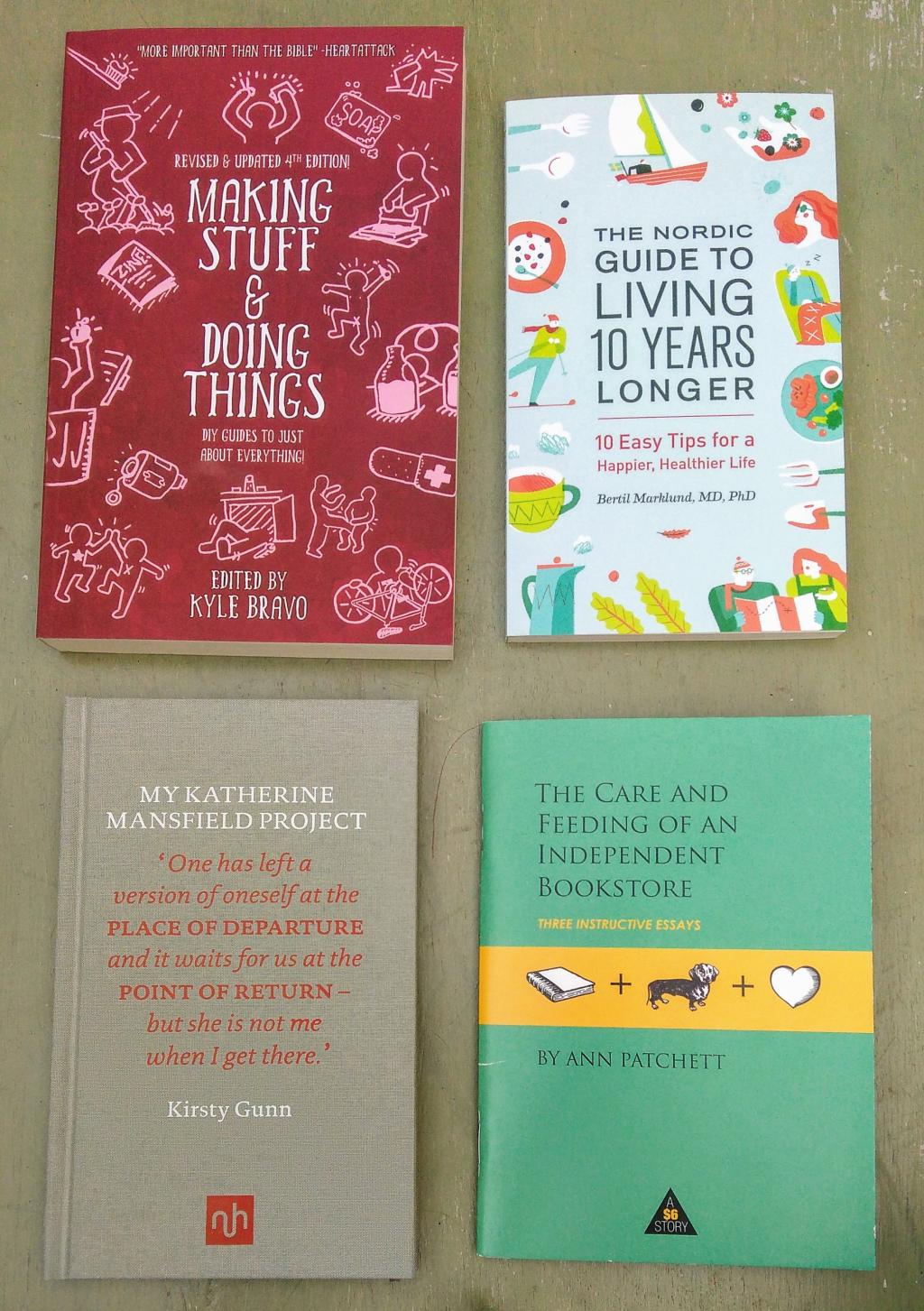
Last week at the David MacDonald seminar, I mentioned to the assembled group that I spend my life responding to bug reports:
In the discussion that followed, I talked about how I spend my daily life, in essence, responding to bug reports.
I talked about how, when you spend enough time shining light in the dark recesses of a digital system, addressing its bugs and trying to add missing features, sometimes you reach a point where you realize that the digital system’s fundamental design is one substantially unsuited to the task for which it’s being used.
One of the things that became clear from the reaction to this characterization is that the notion of a “bug report,” while second nature to the digerati, isn’t something that regular everyday people necessarily understand. That’s a shame, as I believe it’s a useful notion, one that allows many problems to be solved quickly, efficiently and powerfully without recourse to blame or getting overwhelmed by scale. Nothing everything can be characterized as a bug, but many things can, especially with regards to small-scale human systems like cities.
I had a chance to take this idea out for a ride last week when I noticed that Holland College had started to demolish buildings immediately upon receipt of a building permit, without waiting for the 21 day appeal period, which ends on September 5, to arrive.
This seemed like a bug to me in the city’s operating system: an unanticipated confluence of conditions that resulted in an unrecoverable error.
And so I suggested to the CBC that it do a story on this, Steve Bruce got assigned the story, and it was published today online and will run tonight on Compass.

I was happy with Councillor Greg Rivard’s reaction to the suggestion that this was an issue that needed to be resolved.
And how often does one get to read Rukavina is right as a subhead!
And that’s the thing about bug reports, and while they’re useful: I didn’t blame anyone, I didn’t suggest that anyone had done anything wrong, or that anyone was corrupt, or that anything more than Holland College following the rules, as laid out, had happened. I simply pointed out a logical consistency in a bylaw, with the hopes that it would be corrected.
In the summer, Air Canada runs flights to Montreal using its Rouge sub-brand, which is a euphemism for “cram as many vacationers onto the plane as possible.”
For the tall, like me, this means knees abut the seat in front.
For the run from Montreal to Boston I lucked into an exit row seat. It’s missing a right arm rest, but I have about a metre of leg room.
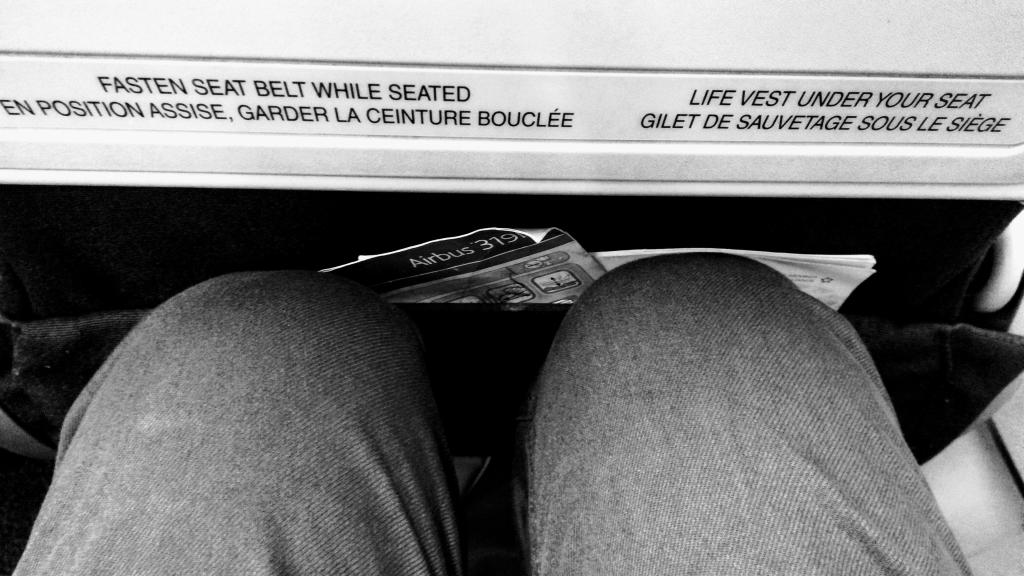 ,
, 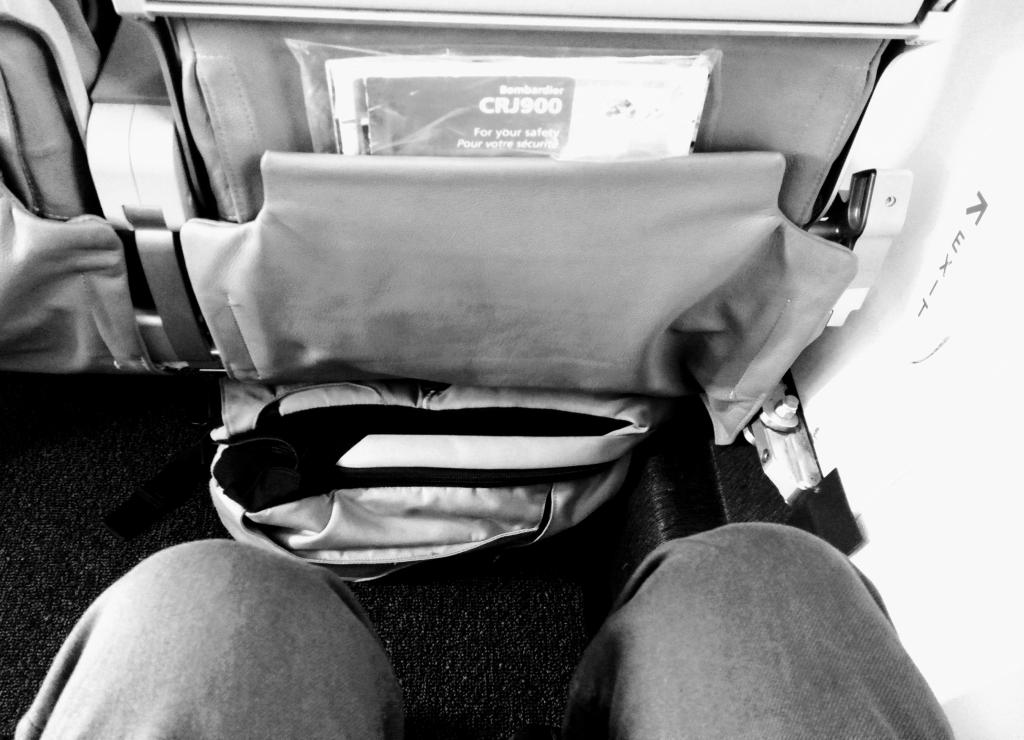
In all the years I’ve been flying out of Charlottetown, I’ve never seen it as busy at 6:00 a.m. as it is today. There are 3 flights departing within an hour of each other, and, from the looks of it, they’re all full.
I ignored the advice to show up 2 hours in advance as absurd (midwinter I’ve seen as few as a half dozen people in the waiting room). After all, what’s the point of living 10 minutes from the airport.
Most everyone else seems to have heeded the advice. And so there was no security line, and I went from cab to gate in 4 minutes.
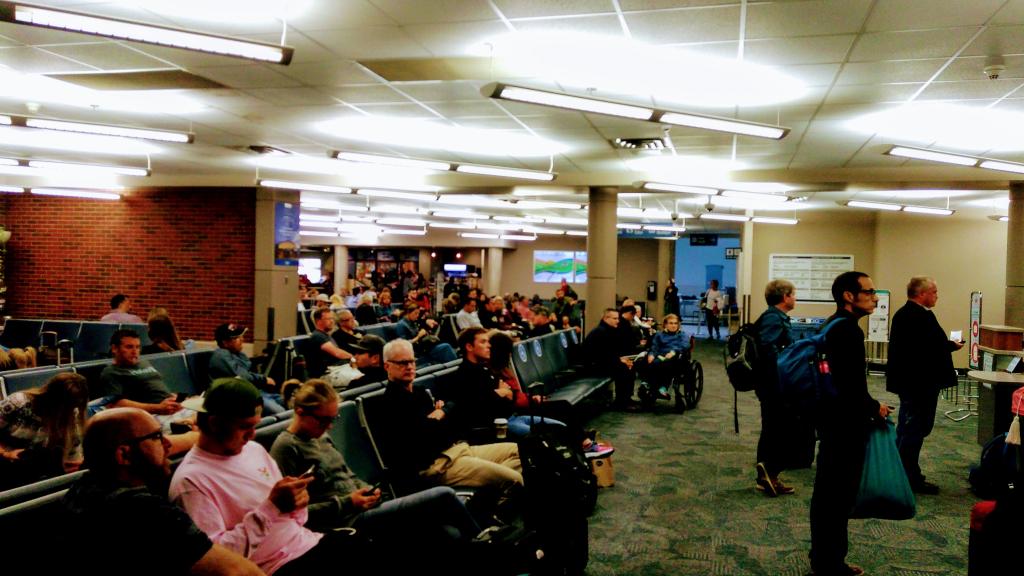
Art in the Open was wonderful. Again. In a new way. As it always is.
My favourite part of it all was watching people amble—and ambling is truly the best word for it—across the fields and through the forest and around the campfires. The pace, the expressions on the face, it’s not like anything else: it’s not work, it’s not shopping, it’s not entertainment; it’s (only) art. It’s a sight to behold.
When we say “I wish this lasted longer,” I think the amble is what we’re talking about. The disengaged engaged amble that allows the art to leak in when you’re not paying attention.
I wish this lasted longer.
An impromptu father and son haircut outing at Ray’s. The renovations are complete and the place has never looked better.
For someone who has challenges with transitions, Oliver’s always done well with haircuts; I credit Ray’s for that.
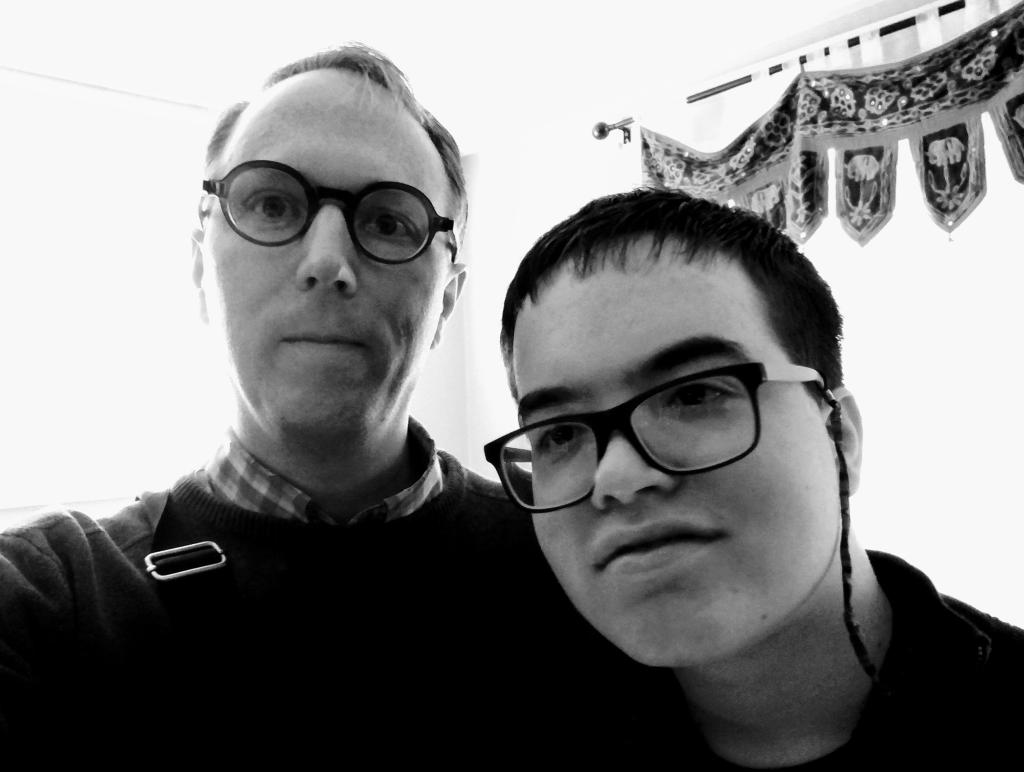 ,
, 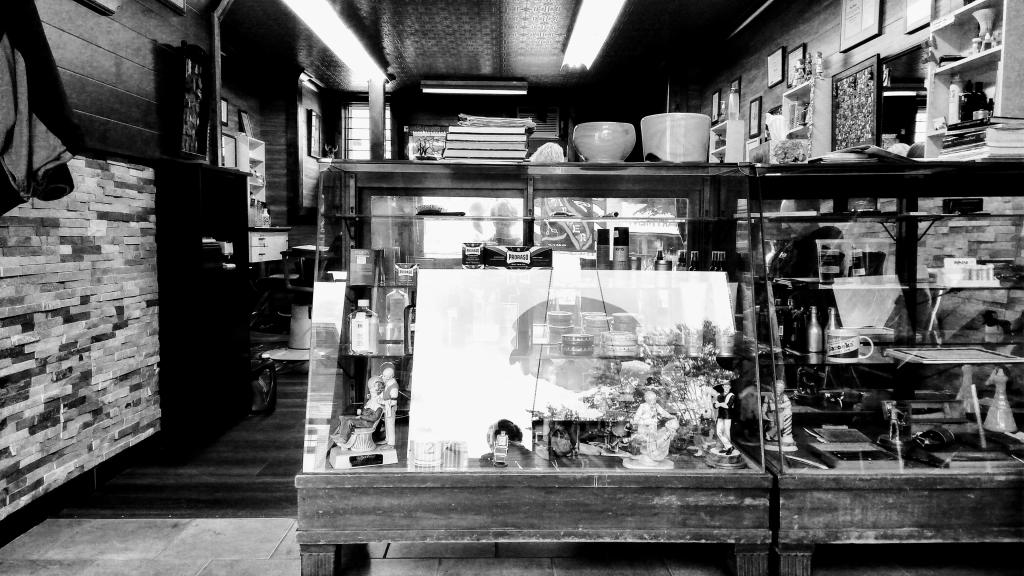
From Spectrum News, in the post For people with autism, unforeseen events come as no surprise, a reference to the “magical world theory” of MIT professor Pawan Sinha:
“To a person with autism, it seems as if they live in a magical world where things are happening seemingly without cause,” Sinha says. “If everything is magical, then even the truly magical things would not be seen as too out of the ordinary.”
I’m wary of almost all autism research, not because of its veracity, but because, as a supporter of someone on the spectrum, it generally proves unhelpful to me in that role. But I like the way that Sinha’s theory lyrically expresses an approach to autism that is much full of possibility as of challenge.
In the abstract of the paper underlying the theory, Sinha presents a slightly more technical explanation:
With compromised prediction skills, an individual with autism inhabits a seemingly “magical” world wherein events occur unexpectedly and without cause. Immersion in such a capricious environment can prove overwhelming and compromise one’s ability to effectively interact with it. If validated, this hypothesis has the potential of providing unifying insights into multiple aspects of autism, with attendant benefits for improving diagnosis and therapy.
Stated this way it makes me think that “immersion in a capricious environment” is something that describes the modern condition for all of us; in this light, the diagnosis and therapy that might result may prove universally useful.

 I am
I am